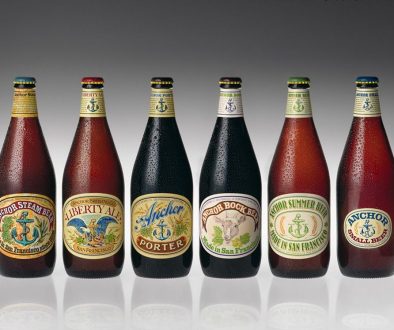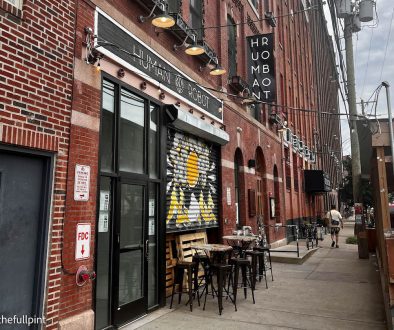Addressing Challenges Faced By Craft Beer Bars
There are a few challenges that face a beer buyer, beer sales reps and to a lesser extent, beer drinkers in regard to today’s beer bar/gastropub. Within the last five years or so, the number of restaurants that have 20 or more beer taps have grown significantly. While I can’t speak for the entire country, here in Southern California, it would seem a bit less people are going out to a bar to buy craft beer than just a few years ago.
The challenges I speak of goes something like this: For the beer buyer, you are tasked with the balance of having a diverse lineup of craft beer, but a lineup that sells well and makes a good margin. All day long, as a beer buyer, you are bombarded with a salesforce trying to get a permanent handle in your establishment or an upcoming, unknown beer that may or may not resonate with the customers. A common challenge throughout the industry at all links of the chain is the fact that today’s drinker is not remaining loyal to a particular brewery or beer, they are “one and done”. Another challenge is the temptation of not being an IPA bar. IPAs are the best-selling beer in the country. There is a fine line between catering to that fact and becoming a one trick pony, alienating those who don’t love the hops.
The beer sales rep, whether it be a representative of the brewery or the distributor, is looking to do a few things that are challenging, also touched upon above. With signs indicating that the flagship beer is dead, heritage craft brewers and subsequent salesforce are having problems selling their core beers and getting permanent handle placements. The next two levels below the heritage brewer are trying to squeeze in their next new product or trying to sell a virtually unknown beer. This is tough.
The customer has some challenges as well. Back in the day, most restaurants and beer bars had between five and ten handles. With 20 or more handles at beer bars and gastropubs, customers are simply overwhelmed with choice. It seems like a vicious cycle in regard to the issue of waning brand loyalty. The chances of today’s beer bar keeping a popular beer permanently or semi-permanently are slim to none. There has also been a culture of what I refer to as “pitcher shaming” at finer beer bars. The average beer drinker loves to get off of work, and scarf down an appetizer and a pitcher of beer. In the craft beer world, things like frosted glasses and pitchers of beer are frowned upon in favor of expensive goblets of beer and paddles of beer tasters. This leads to higher prices and less glasses of beer enjoyed and, subsequently, sold. Let’s remember, craft beer can be expensive, especially when you are talking about a double dry hopped hazy Double IPA or a barrel aged imperial stout. While there are still pockets of the country that have $4 and $5 craft beers on tap, from my travels, $7-10 is becoming the norm on full pours of beer at beer bars and gastropubs.
So here we are, the beer buyer is fatigued, the sales rep is scrambling, and the consumer is flustered, while questioning the economics of it all. I’ve come up with a beer program in my head that could solve some of these problems.
I would present a two tiered craft beer program that would be able to be plugged into most craft beer bars and gastropubs with 20 or more handles. The first tier being a permanent or semi-permanent lineup of heritage, core brand entry level classics. These would be beers with a longstanding reputation for being true to style, with the highest quality. Typically, in half barrel format, these beers should be an economical purchase for the beer buyer and subsequently the consumer. These beers would be sold as full pours or in pitchers only. The hope is the customer feels like there is a good value on the menu, the wings and pitcher people don’t feel alienated, and the beer buyer is pouring through volume, making a good enough margin. The second tier would be a well thought out mix of popular beer styles,some fancier and in some cases stronger options. The hope is that after a few economical pours of beer, the average beer drinker might take a peek at the fancier, more expensive beers on tap. It would look something like this, and these options can be subbed out for what’s easily available and affordable:
Taps 1 – 6, Permanently Placed (full pours and pitchers)
American Pale Ale – Sierra Nevada Pale Ale or Oskar Blues Dale’s Pale Ale
Pale Lager – Modern Times Ice or Firestone Walker Lager
IPA – Bell’s Two Hearted Ale or Stone IPA
Blonde – 805 or Maui Brewing Bikini Blonde
Brown – Cigar City Maduro Brown
Double IPA – Pliny The Elder
So here is where things get interesting. As mentioned above, many beer buyers fall into the trap of stocking the “easy layup”, known as the IPA. Because there are plenty of customers who always want to try the latest, greatest and something new, taps 7 – 20 will be a cornucopia of great beer that should please the hop heads, but not be an uninspired gamut of IPAs.
Taps 7 – 20, Rotating Handles (full pour and half pours)
1. Imperial Stout
2. Hazy IPA
3. Hazy Double IPA
4. Mexican Craft Lager
5. Fruited Beer
6. Crisp Hoppy Beer (Dry Hopped Lager/Session IPA/West Coast IPA)
7. Experimental/Weird Beer
8. Hef
9. Barrel Aged Belgian Sour
10. Trappist
11. Heritage Seasonal – Think Sierra Nevada Celebration or Bell’s Oberon
12. Rare Keg / Cellared Keg
13. Strong Beer – Think Barleywine, Olde Ale, American Strong Ale
14. Farmhouse
Pricing for taps 7 – 10 can be creatively priced. Either set a fixed price regardless of the cost of the keg, offset by the volume sold by the six permanent handles, or have tiered pricing based on locality, strength of beer or cost of beer. We know that small batch barrel aged beer costs more at wholesale, so you can’t lose on that keg. The hazy made 10 miles away however should be fairly priced.
Keep the beer rep happy, keep the beer buyer happy and motivated, keep the wing and pitchers people happy, keep the hop heads happy, and keep the explorers happy.





February 21, 2019 @ 5:21 am
The thing that this article is ignoring is that often distributors are trying to move product, and have developed relationships with beer buyers. Beer Buyers, at least good ones, dictate to the distributors what they can move, based on consumer wants and needs. BAD Beer Buyers let the distributors dictate deals…. i.e. You can have this high demand annual release but only if you move this lesser selling SKU. The result is a glut of poorly executed mediocre taps, that eventually get emptied out 1/2 ounce at a time in samples.
This is an economic system. Consumers demand product from Beer Buyers, who need to demand product from distributors, who demand product from producers. If the producers don’t make what the Consumers ultimately want, the producers shouldn’t be in business, but with that third tier in the middle, producers can get away with making crappy beer.
March 2, 2019 @ 4:21 pm
I couldn’t agree with you more. If I owned a craft beer pub and were forced by the distributors to buy the ‘dogs’, could I form an association with the other craft beer pub owners in my town and leverage that to push back on the distributor?
Over and over and over I see distributors controlling the retail outlets they sell to in exactly the way you are referencing. It happens in the beer biz, the flower biz, the bridal market biz and many others. The tail is wagging the dog.
February 5, 2019 @ 11:22 am
My biggest issue with these tap situations at “craft” beer bars are the non-craft beers that try to camouflage themselves and get a tap. AB-Inbev, Miller-Coors and Constellation tried for over a decade to KILL craft beer. When their dumb asses figured out they couldn’t they did the next best thing; they bought or created craft beers. Most of you would be amazed how many “craft” breweries arent craft breweries!
I fully support these breweries rights to “sell out”. Its the American way. But once one of these companies owns even a bit of those breweries yiud be a fool to believe the “craft” has not left the building and been replaced with cheaper more profitable ingrediants/methods.
Take your money and run Ballast Point, Kona, Brooklyn, Devils Backbone (wait, didnt AB just create that one?), 21st Amendment, Brekenridge…CIGAR CITY & OSCAR BLUES??? Say what? Yep them too. But don’t try to sell yourselves as craft. Cuz you ain’t anymore.
Check out Infographic:
bit.ly/BullshitCorporateBreweries
March 2, 2019 @ 4:24 pm
If you buy locally produced craft beers you know you are getting craft. I live in Columbus, Ohio and we have probably a dozen well known, recognizable local brewers. I always look for their beers when I am in the bars.
February 1, 2019 @ 7:20 pm
You don’t want to have to sit on garbage no one wants to buy/drink. This model has you basically rotating 20% of those taps regularly while the other styles sit. Businesses are in business to make money.
January 30, 2019 @ 5:34 am
A craft beer bar with 2 taps is going to have atleast 1 cider and maybe as many as 3 (usually if there are strong local options).
January 29, 2019 @ 3:56 pm
this shows a sad lack of business knowledge on the post of the writer. Pricing an Imperial Stout and Hazy IPA or a cellared keg, strong beer, etc. at the same tier as a craft lager or hef is ridiculous. The writer should know that MOST beer pricing levels are set around the cost of producing the beer. A $7 pour is likely going to be a hazy IPA (which costs a lot more in late addition hops, which are not efficiently utilized, meaning it takes a LOT more of them to get the same IBU as early addition) or a strong beer/imperial stout (which cost a lot more in malt and then in hops to balance. A cellared beer is likely going to cost similarly or even a bit more because of time spent in barrels plus a lot of extra money invested in malt. And, as mentioned above, Pliny the Elder? at the same price tier as a Sierra Nevada Pale? The cost is so much different.
It’s about business. Craft beer, at least at the lower end, is NOT a “good margin” business. It works. It can be good, but once you get into distribution (specifically shelf space) you’re hitting significant competition. Charging these lower prices is going to hit the craft brewery’s bottom line, which is already a bit thin.
Yes, craft beer can be expensive. But it is also widely varied. You can find SN-PA for low prices; you can find Stone for low prices; but if you look for Lost Abbey Deliverance, you’re going to pay through the nose. Gee – guess why.
C’mon.
January 30, 2019 @ 9:22 am
I don’t think they’re suggesting only two price tiers. They’re just separating the available handles into two categories (permenant handles + standby styles & rotating + experimental / one-off). The word choice of “tiers” could be questioned, however they did clarify about pricing kegs to cost / strength, etc.
January 30, 2019 @ 11:49 am
“or have tiered pricing based on locality, strength of beer or cost of beer.”
Too stoked to interject your opinion and feel “smarter” than the author that you couldn’t be bothered to actually read the article?
February 21, 2019 @ 5:15 am
We’re seeing $6-$7.50 pours of ANYTHING that is not a “flagship” in rural college town VA. But we’re also seeing $5 6-packs of Hamms Tallboys and $24 four-packs of mediocre double IPA.
January 25, 2019 @ 10:49 am
Full time Pliny? Helles yes!
January 29, 2019 @ 9:53 am
I was excited to get my hands on two bottles of Elder (and 1 Blind Pig) last week here in Sacramento. RRBC distributes to this area and some of the better craft beer spots get a keg occasionally.
January 24, 2019 @ 2:28 pm
You forgot craft cider!